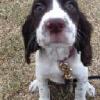Disclaimer: The following is an anecdotal account from multiple observations. I did not set up the experiment with the intention of testing a hypothesis, but am simply reporting what I have seen after noticing the issue described.
Over the past 2 months, I have been offering unlimited amounts of Sunburst Ant Nectar to a wild colony of Linepithema humile that enjoys entering my house through small cracks. Based on the amount they are drinking each day, with no discernable reduction in feeding activity over these past months, the colony appears to be very large.
Over the past 10 days or so, I filled up 5 byFormica Mega liquid feeders with 40 mL of Sunburst Ant Nectar each (200 mL total), and placed the feeders in a single row for the ants to drink. The liquid content and the feeder design is the same for each, so the only variable is the position of the feeder. Each feeder is almost touching the other--there is not much distance between them in the row.
After 10 days, I measured the net amount of liquid remaining in each feeder, by weight. Here are the results, from left to right in the row of 5 feeders:
The ants are tending the feeders different amounts, despite the contents of each being identical. In total, I would estimate the ants are consuming 10-15 mL of fluid per day. The feeding activity appears to vary based on the temperature and environmental conditions outside, as noted by the density of ants along the foraging trail.
I conclude that the position/placement of the feeder is distorting the rate of feeding. Therefore, in future food studies, it may be necessary to frequently randomize the placement of feeders or foods when conducting comparison studies of the attractiveness of closely related foods in order to eliminate the possibility of position bias. How to do this in a way where the foraging trails are not also intermingled so as to affect the results, I have no idea.
Edited by drtrmiller, April 25 2020 - 11:56 AM.
















